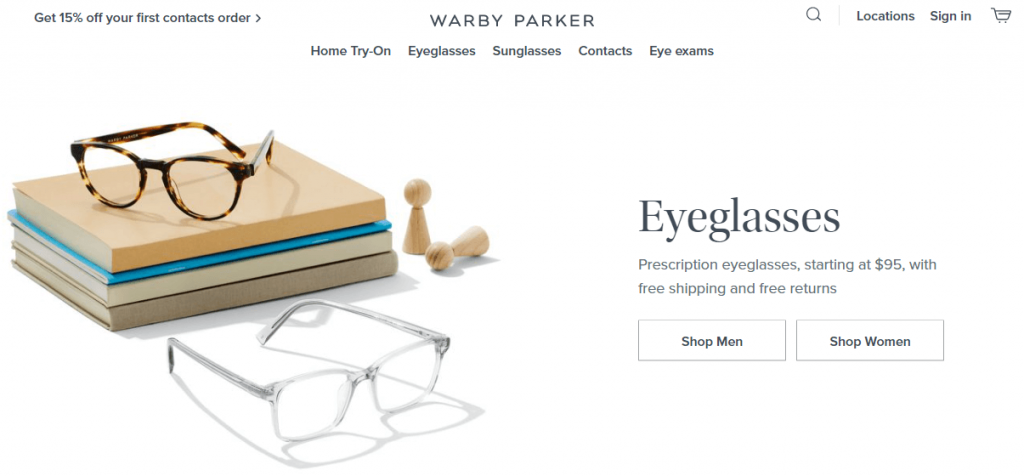When it comes to marketing strategies, there always seem to be too many to consider.
Digital marketing has many different elements, like social media, SEO, content, email, and much more. Trying to approach all the other areas of digital marketing can make it hard for marketers to stay focused.
That’s where the 5 Ps of marketing come in.
These Ps represent core values that make up the foundation of marketing and help align values within an organization.
When the 5 Ps of marketing become the focal point, every initiative you implement will align with your company goals.
- But what are these 5 Ps of marketing?
- Why do they really matter?
- How do brands use them to achieve digital marketing success?
Next, let’s take a look at those questions and understand the importance of the 5 Ps of marketing to your business.
- What Are the 5 Ps of Marketing?
- Other Marketing Mix Ps
- Why are the 5 Ps of Marketing Important to Your Digital Strategy?
- Examples From Real Brands of the 5 Ps of Marketing
- Wrap Up
What Are the 5 Ps of Marketing?
The 5 Ps of marketing are an essential part of a successful marketing mix strategy.
This mix consists of the actions brands take to market their products and services, using a framework with five core components: product, place, price, promotion, and people.
These five elements have been the foundation of marketing strategies since the 1940s. Modern marketers have added “people” to create what is now commonly known as the 5 Ps of marketing.
Let’s take a closer look at each of these elements:
1. Product
The product element refers to the item or service that a company offers to its customers. It includes the physical product, packaging, branding, design, quality, features, and benefits.
The goal is to create a product that meets the needs and wants of the target market, and offers unique value that sets it apart from competitors.
For example, a company may differentiate its product by emphasizing quality, offering a unique design, or providing a superior customer experience. Branding plays a key role in this segment of the marketing mix.
2. Place
The place refers to the location where customers can purchase the product or service and how they’ll access it. It includes distribution channels, logistics, market coverage, and levels of service.
You want to ensure that the product is easily accessible and available at the right time and place, for the right people. So, this is a critical principle to think through.
For instance, a company may sell its product through multiple channels such as brick-and-mortar stores, online marketplaces, or through a direct-to-consumer model.
The company may also need to consider factors such as inventory management, order fulfillment, and shipping options to ensure that the product is available when and where customers need it.
3. Price
The price component indicates the amount that customers pay for the product or service. It comprehends the cost of goods, profit margins, pricing strategy, discounts, and promotional offers.
The marketing strategy should set a price that is competitive and reflects the value of the product, while also aligning with the business profit goals. Pricing affects how your goods are perceived by consumers, and can impact your brand’s reputation as affordable or lux.
For example, a company may use a skimming pricing strategy, where they set a high price to appeal to customers who are willing to pay a premium for a unique product or experience.
Alternatively, they may use a penetration pricing strategy, where they set a low price to gain market share and attract price-sensitive customers.
4. Promotion
Promotion refers to the various marketing tactics that a company uses to promote its products or services. It includes advertising, sales promotions, public relations, personal selling, and digital marketing.
The goal is to create awareness and interest in the product and persuade customers to make a purchase. It is one step further to closing a deal and selling your product.
For example, a company may run a social media campaign to build brand awareness, offer a discount code to encourage sales, or partner with a celebrity or influencer to promote the product.
5. People
Lastly, but not less important, the people element is about the individuals who are involved in the production, distribution, and consumption of the product or service. It includes employees, customers, suppliers, and partners.
Businesses and brands don’t run by themselves. You must create a positive relationship between the company and its stakeholders, and ensure that everyone’s needs and wants are being met.
For example, a company may invest in employee training and development to improve the quality of its product or service. It may also gather customer feedback to improve the product and address any issues or concerns.
From internal satisfaction to customer reviews, people are the core of every business.
Looking for professionals to ensemble your dream marketing team?
WriterAccess connects you with over 15,000 skilled freelance strategists, writers and designers. Start the free trial today to get matched with the right freelancers for your company!
Other Marketing Mix Ps
The 5 Ps of marketing provide the foundation for a strong marketing strategy. However, depending on the type of business, marketers might want to add a few other Ps to their marketing mix to ensure that all aspects of the business are covered.
Here are some additional Ps that can enrich your marketing strategy:
Process
The ways in which you deliver your products or services to customers are essential to the overall marketing strategy. The process includes how you design, create, and deliver your products and services to your customers.
This P can help you identify the best way to deliver your products or services to your target audience.
Physical Evidence
This P refers to the tangible parts of your products or services that can be delivered into the hands of customers.
This can include anything from a physical product, such as a car, to a digital product, such as software. The physical evidence provides proof of delivery to the customer.
Partners
If you work with partners such as distributors or other marketing partners, then adding their own section to your marketing mix can be crucial.
This P allows you to identify and establish partnerships that can help you expand your reach, improve your customer service, and increase your overall revenue.
Payment
Payment refers to the ways in which you hold and process transactions and payments. This can include payment methods such as cash, credit cards, or online payment platforms.
Identifying the best payment options for your business can help you improve your customer experience and streamline your operations.
Packaging
Packaging refers to the physical appearance and presentation of your products or services.
Good packaging can help you improve your branding, differentiate your products from competitors, and increase sales.
Perception
Your brand’s reputation and the way it is perceived by your target audience are important parts of modern digital marketing strategies.
This P can help you identify how your brand is perceived and make changes to improve your overall image and customer experience.
Why are the 5 Ps of Marketing Important to Your Digital Strategy?
The biggest impact the 5 Ps of marketing can have is helping you focus on your core marketing goals. They do so by creating alignment and a framework that directs all of your initiatives.
When you have your foundational pillars in place, it’s that much easier to see what areas of your business need additional help.
For example, let’s say you are struggling to close sales. You might want to examine the products’ pricing or the people in charge of your sales departments.
Or, if you aren’t receiving great reviews about your new products or services. Maybe it’s time to look deeper into your product lines and see if they are targeting the right place.
Regardless of the challenges your organization faces, a core set of values is key to promoting goal alignment and focus.
Examples From Real Brands of the 5 Ps of Marketing
Now that you understand what the 5 Ps of marketing are and the benefits that they bring to organizations. Let’s dive deeper into how you can apply these principles to your business.
How the 5 Ps of marketing can be used to create successful marketing strategies? Below are some examples from real brands and how they did that.
Canva
Canva is a revolutionary and disruptive platform that put design control in the hands of those who didn’t have experience in creating marketing materials.
And, when the platform first launched, it was free. After the product was approved by the market, Canva added different premium versions for specific features and multiple business sizes.
By being mindful of the price of the product, Canva was able to wait until the right time to add in other features, making the price still worth it to users.

Mercaris
Mercaris is a financial technology company that spotted a gap in the marketing of its product.
By focusing on organic, non-GMO, and sustainable agriculture, the brand was able to stay ahead of the market. It managed to deliver a niche service that didn’t have as many direct competitors as other fintech companies.
By creating a product that didn’t have to worry about as much competition, Mercaris was able to claim its space and create its own segment in the marketplace.
Warby Parker
The online prescription glasses brand Warby Parker offers a model that sells frames at a low cost of $95, which drastically undercuts many competitors in the space.
The brand based its pricing on public perception of what was both inexpensive and quality. So, Warby Parker was able to find the perfect price for their product.
By focusing on its public perception and the price of the product, Warby Parker managed to achieve both of its main goals by being affordable while appearing expensive.

Hu
Hu is a dessert brand that focuses on making organic products. Its products are free of many of the ingredients and additives found in traditional candy and chocolate.
However, rather than being a niche company that can only be found through online research, Hu placed their products in major retail stores like Whole Foods, Target, and Walmart.
By placing the product in retail stores, the brand made its product accessible to most shoppers. Hu was able to expand its brand awareness among consumers and increase its sales.
The Lip Bar
The Lip Bar is a well-known vegan beauty brand that leverages relationships and partnerships with influencers to promote its products to wider audiences.
The brand puts women of color at the core of its marketing strategies and selectively chooses partners who represent its mission.
The strategy was to promote the brand on the right channels, like social media and influencer blogs. The Lip Bar is able to appeal to its target audience in the places the target audience spends their time.

Wrap Up
Implementing the 5 Ps of marketing within your organization is crucial for achieving a successful and cohesive marketing strategy. These principles serve as a guiding framework that aligns your teams and keeps them focused on the core values driving your brand’s success.
To effectively execute the 5 Ps of marketing, you need a reliable content creation partner that understands the importance of alignment and collaboration. This is where WriterAccess comes in. As a leading content creation platform, it offers a wide range of benefits that directly relate to the 5 Ps:
Product: WriterAccess provides high-quality written content, ensuring your product messaging is compelling, informative, and tailored to your target audience.
Price: With flexible pricing options, it enables you to optimize your budget while still obtaining top-notch content from experienced writers.
Promotion: Through engaging blog posts, articles, and social media content, WriterAccess helps you promote your brand effectively, driving traffic and increasing brand awareness.
Place: Our content creation platform can easily connect you with skilled writers from various industries and geographies, ensuring your content reaches the right place at the right time.
People: The team at WriterAccess consists of talented writers, editors, and content strategists who are dedicated to understanding your brand’s voice and delivering content that resonates with your target audience.
Get started with WriterAccess today to harness the power of expertly crafted content to enhance your marketing mix. Experience the benefits of streamlined content creation, improved brand messaging, and increased audience engagement. It’s free for 14 days!









